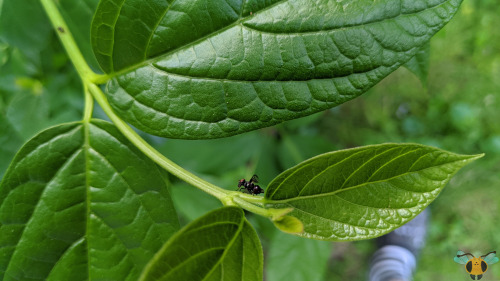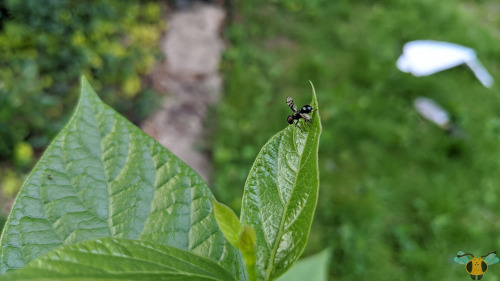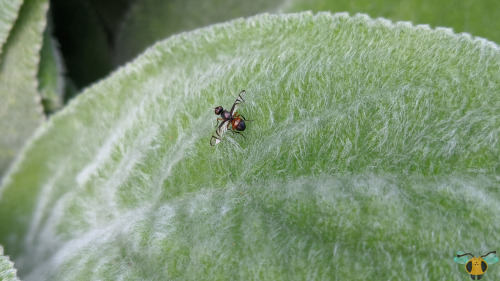Signal Fly - Rivellia spp.The process continues to add more insect families to the blog, so today th
Signal Fly - Rivellia spp.The process continues to add more insect families to the blog, so today these tiny individuals will join the blog. The pictures don’t really do their motions justice, as while it has been a few years since these pictures were taken, I can distinctly remember their most prominent behavior. As they were crawling and searching on the leaves: their wings were always shifting around and orienting as if balancing. Why do they actually keep moving their wings as they move? I’m not entirely sure, but it can’t just be for balance. Flies by their design have halteres to balance themselves while in flight and have 6 legs to keep balanced when they walk. I could see the wings having use in temperature regulation, but generally wing motion is limited to be effective, and I’m not sure how much heat those stripes on the wings would absorb or radiate. Hmmm, maybe they’re flashing their wings to show off those patterns to attract other Flies, possibly mates. If they return to the backyard I’ll have to keep a close eye on them, watching for their metallic body and patterned wings.I’m more inclined to believe the idea that the wings help attract mates (or possibly even serve to communicate other things) because we’ve seen similar behavior in the Peacock Fly, who holds its wings upright when roaming around its environment or when near others of its own kind. The similarities will have to be noted and compared, but it must be acknowledged that the Signal Fly on showcase here is not a Picture-Wing Fly. Though they may have similar heads and wing decoration, Signal Flies are their own thing, belonging to the family Platystomatidae (that’s a mouthful). They are an odd branch of Flies, but I welcome them here and hope to learn more about them. For examples: is their body shaped to take advantage of mimicry or does it serve another purpose? Are the individuals shown in the pictures different species or just variations in color? Finally, since they’re likely to gather in areas enjoyed by other Flies (decaying sources of food) how might they interact with them? A future post will showcase what I find.Pictures were taken on June 4 and July 21, 2020 with a Google Pixel 4. -- source link
#ontario insect#signal fly#rivellia fly#rivellia spp#insect#diptera#june2020#july2020#toronto#unidentified









